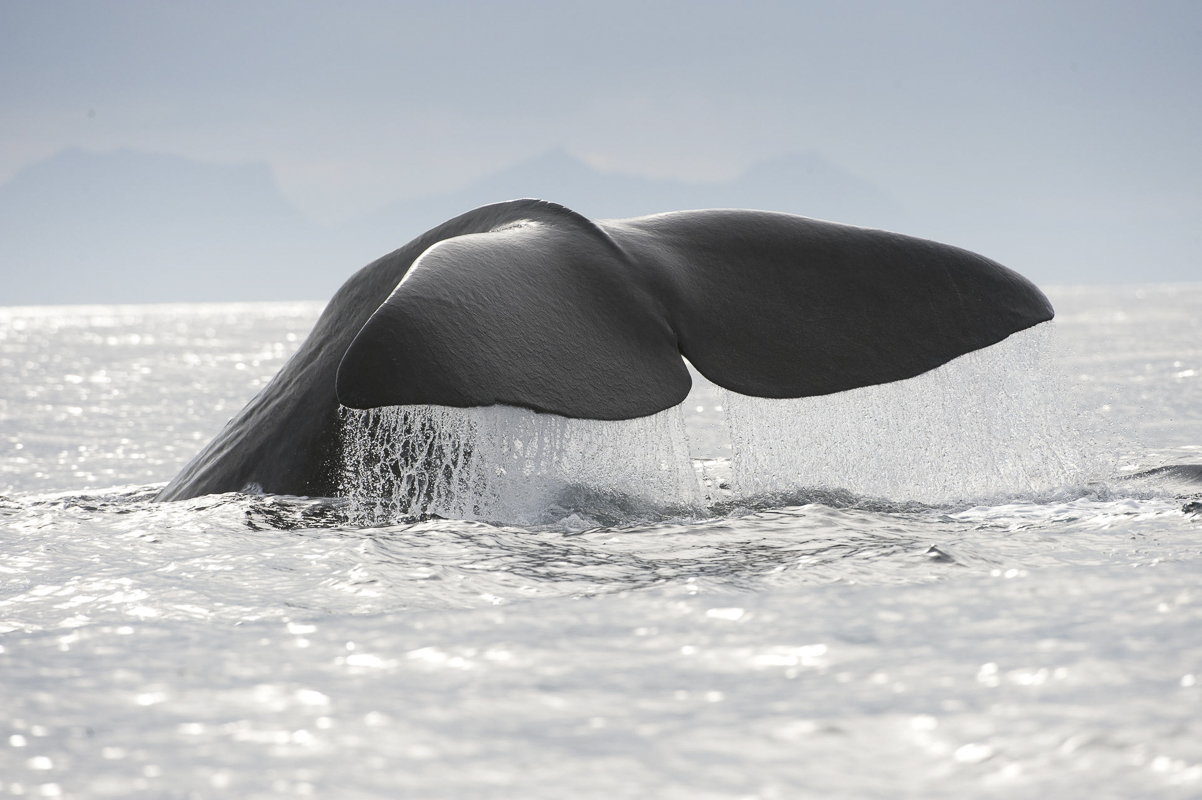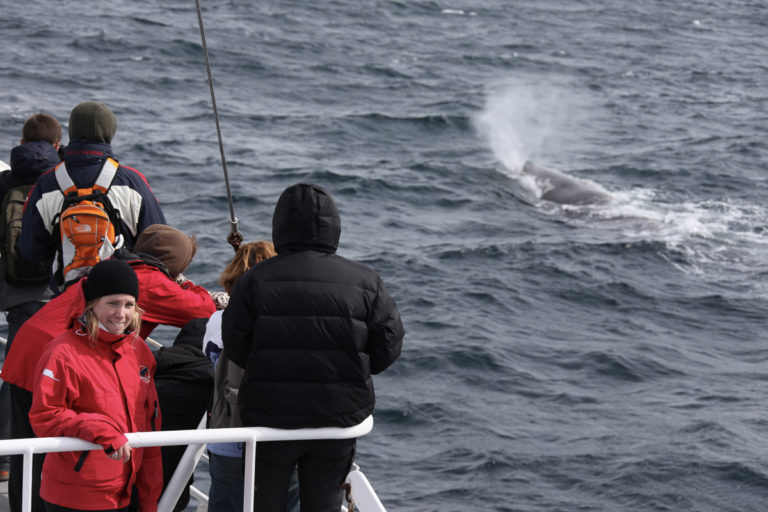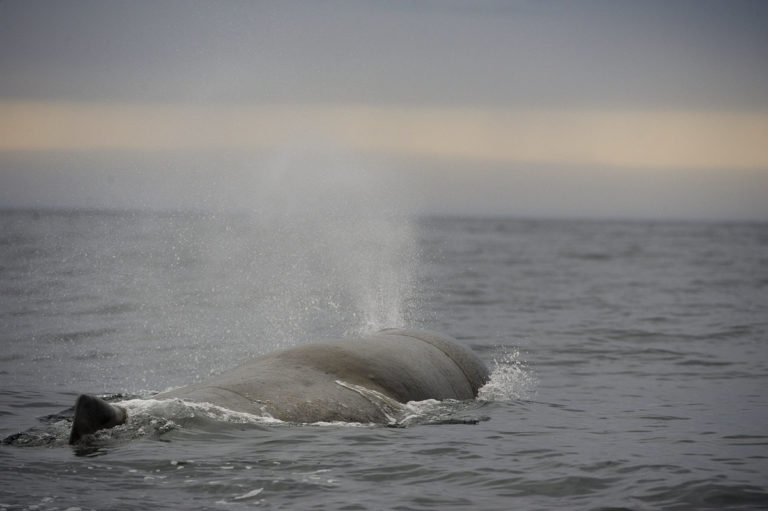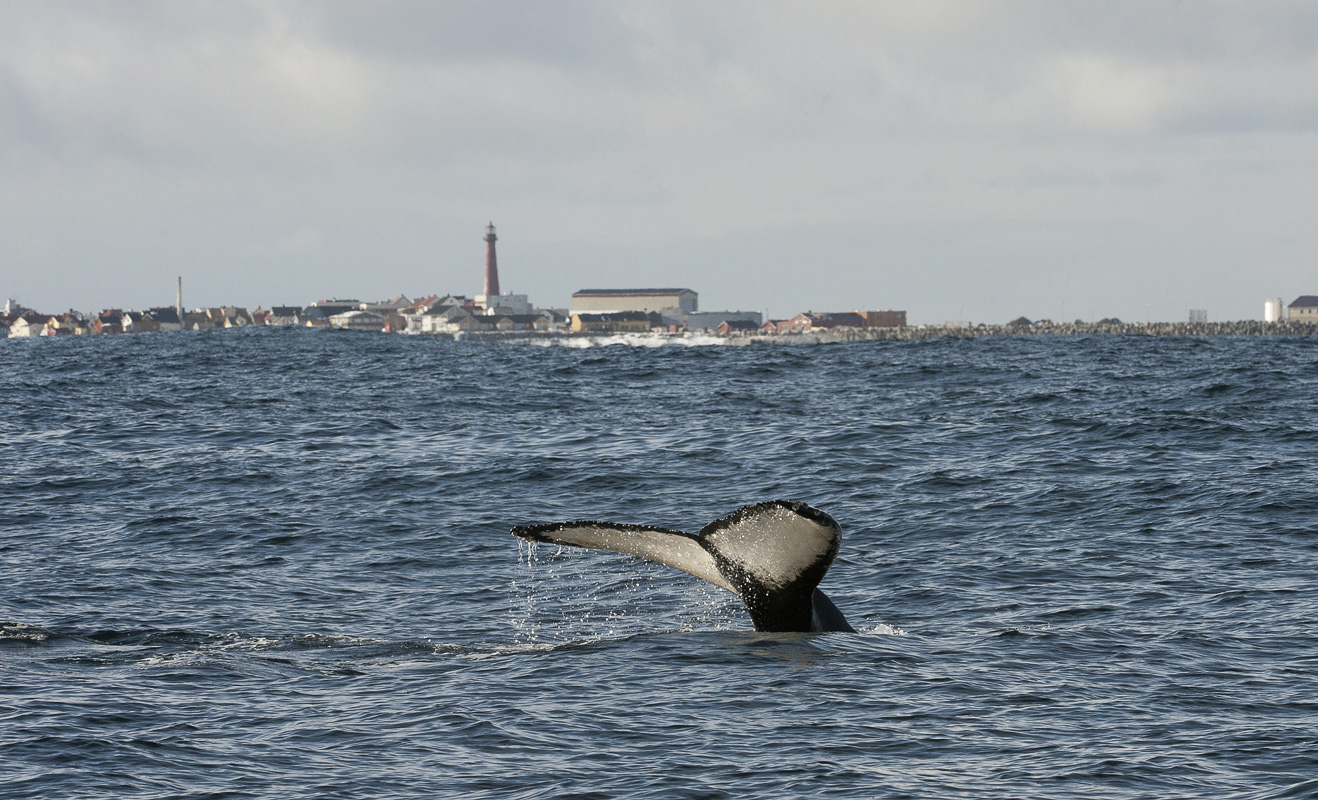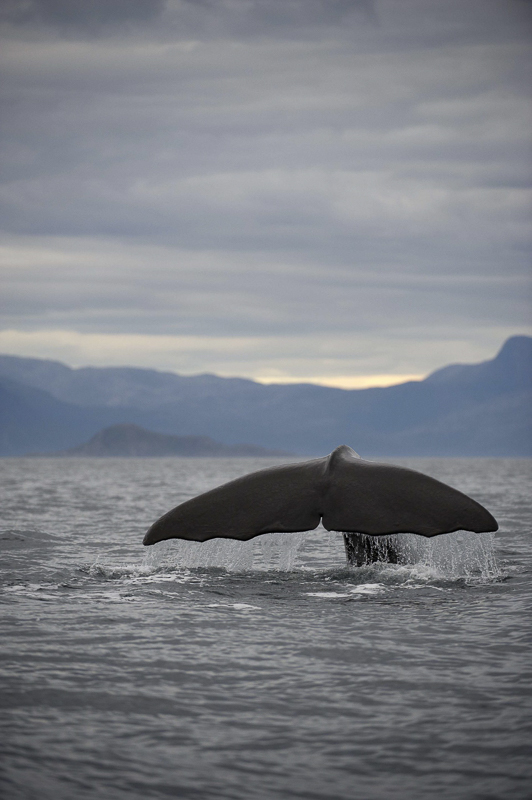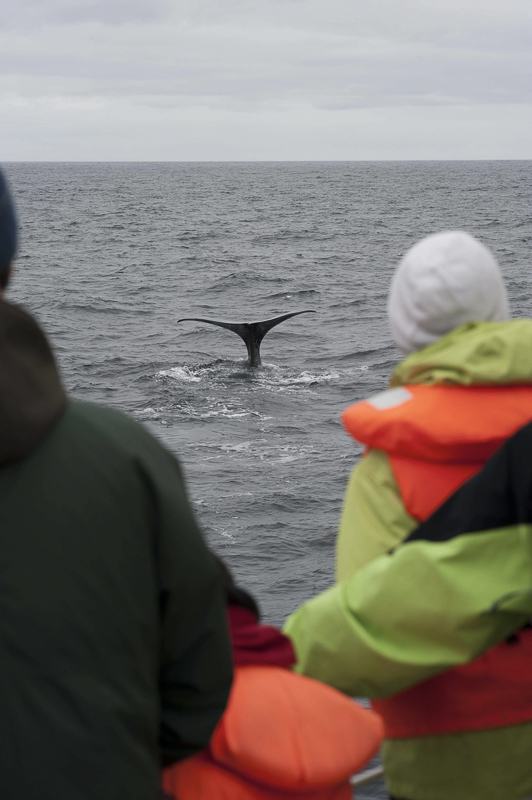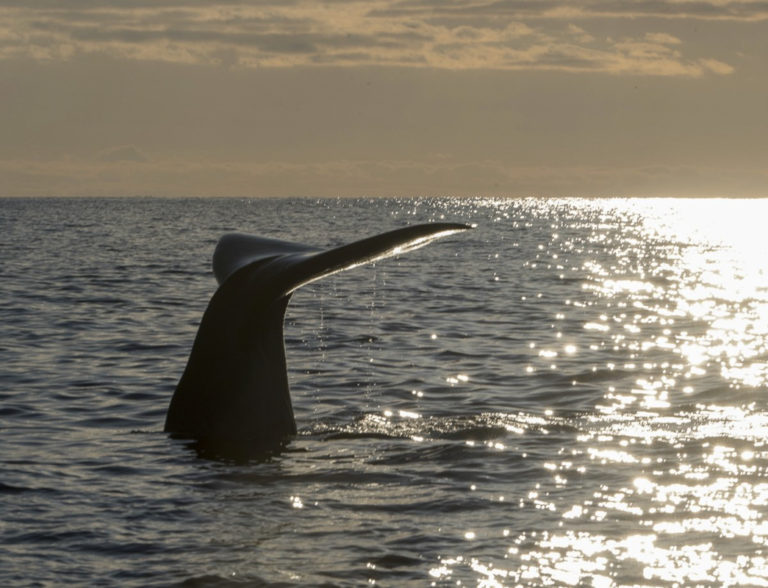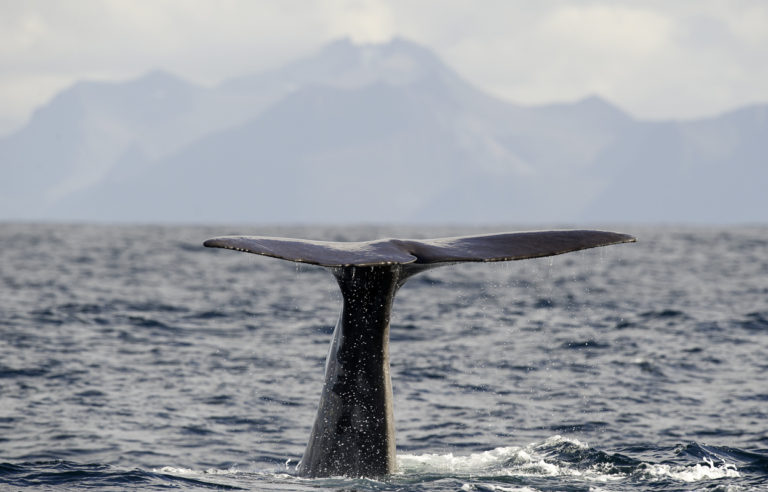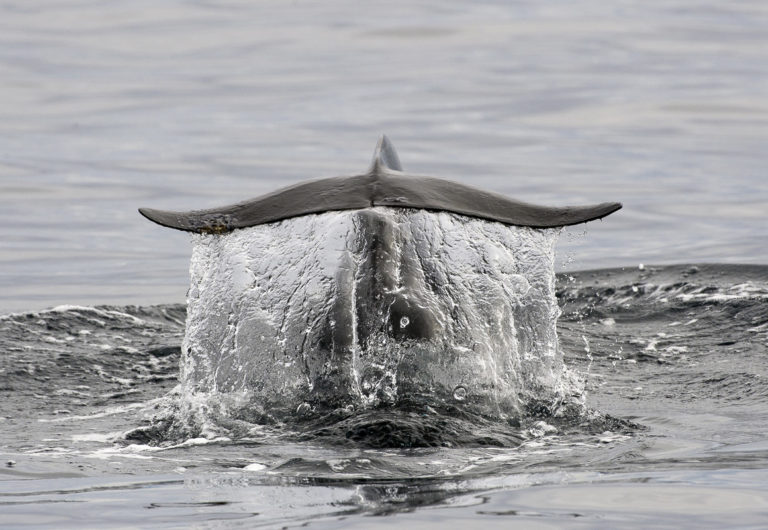Some of the giants of the sea, 20-metre-long sperm whales, really enjoy the sea outside Vesterålen. As the females seem to prefer the middle of the Atlantic Ocean, only male whales frolic in these waters. Join us for a whale safari at Vesterålen.
The shores of Andøya can be seen way off in the distance, the boat rolls and pitches in the swell, fulmars soar high above, and puffins flap their wings where they sit on the water. Suddenly, someone shouts “Whale!” and everyone turns to look. There it is. A grey mass breaks the surface, sending a fountain of seawater high into the air. It stays there for several minutes, resting after diving more than a 1,000 metres deep. Camera shutters go off like machine guns before the whale dives once more. As its body goes down, its tail folds out, and the last thing we see is the whale tail pointing straight up into the air. A chorus of “aaahs” sweeps the boat, and then it’s gone. But there are several others out there…
Sperm whales are the biggest toothed whales
The sperm whale, also known as the cachalot, is the largest of the toothed whales, and males can grow as long as 20 metres, weighing up to 57 tons. Their head makes up a third of their entire body, and they have an organ that is filled with a semi-liquid, oily substance. It is presumed that this substance aids in diving, as well as playing a role in communication with other whales. The name sperm whale comes from people originally believing that the oily substance was the whale’s sperm. Moby Dick, the large white whale in Herman Melville’s famous novel, was a sperm whale.
How can I see a sperm whale in Vesterålen?
Off the island of Andøya, in the Bleiksdjupet trench
The town of Andenes has two companies, Whale Safari Andenes and Sea Safari Andenes. The fishing village of Stø on the adjacent island of Langøya has one company, Arctic Whale Tours.
We know and love all three of them, and couldn’t possibly recommend one over the other. However, do note that they do things a little differently. Study their websites, and see which one you like the best.
Octopus and halibut is on the menu
Sperm whales can dive to depths of 3000 metres and stay submerged for more than two hours, but they normally come up for air after half an hour or so. They feed on octopus, rose fish and halibut, and they often have to wrestle with the largest octopuses down in the deep.
Females prefer the Azores
Sperm whale cows form large colonies in the warm, comfortable waters around the Azores. Whenever killer whales threaten the calves, the cows form a circle with the calves in the middle and big, strong cows all around them. The killer whales don’t stand a chance.
The bulls have to stay in cold waters
It would not be wise to let the massive bulls, who are around 7 metres longer than the cows, eat all the food the calves need to survive and grow. They are therefore sent north to colder waters, such as Vesterålen. Some of the bulls grow big and strong there, periodically making the journey south to the Mid-Atlantic to try their luck with the ladies. The bulls battle it out for the cows way down in the deep, and only the strongest bull is allowed to mate, often building a harem of cows.
Glenn rules the Bleiksdjupet trench
Many bulls, particularly those approaching middle age, have given up on the ladies and instead enjoy Vesterålen full-time. One would imagine resignation to be the prevailing mood down in the deep. Vesterålen’s biggest Don Juan is Glenn. He is a massive hunk of a whale, and he regularly goes south to the Azores to woo the ladies. Glenn is the whale you’re most likely to spot on a whale safari, unless he is off looking for romance, giving the younger fellas a chance to step into the spotlight.
You almost always see a whale
Outside Andøya, the shelf edge, where the food supply is good, is very close to shore. Bleiksdjupet is a large underwater canyon cutting across the continental slope to this area, which is easily accessible by boat from Andenes, Bleik and Stø. Nowhere else along the coast are you as likely to spot whales year-round.
